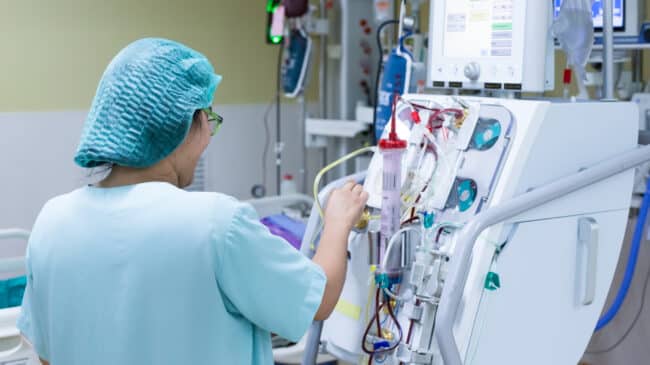Summary of Proposition 29
California’s Proposition 29 on the state’s November 2022 ballot would require physicians, nurse practitioners, or physician assistants with six months of relevant experience to be on-site during treatment at outpatient kidney dialysis clinics. It would also require increased disclosure of clinic ownership and dialysis-related infections. Proposition 29 would prohibit clinics from closing without state approval or discriminating against patients based on the type of coverage they have.
Fiscal Impact
The Legislative Analyst Office estimates that Proposition 29 would cost Californias state and local governments— taxpayers—”tens of millions of dollars annually.” Dialysis centers would incur additional costs to implement the measure some of which they would be expected to pass along in the form of higher fees and charges to California’s Medi-Cal system and to health care plans for public sector employees and retirees.
Arguments in Favor
Proponents of Prop. 29 say that because kidney dialysis services are essential to the continued survival of 80,000 Californians a month, the industry requires common-sense regulation that ensures these services are provided safely. Specifically, because dialysis is a dangerous procedure, it is essential that a trained clinician be nearby to react if something goes wrong. State approval of clinic closures would protect rural communities from losing access to needed dialysis services. Supporters also say that greater financial disclosure is required so that researchers and the public can better assess the impact of physician ownership of clinics. Dialysis companies are so profitable that they can easily afford to make the proposed changes while still covering their operating costs.
Arguments Against
Opponents claim Prop. 29 would increase the cost of providing dialysis services, and force some dialysis centers to shut down and others to reduce hours, thereby reducing access to this lifesaving treatment. Opponents assert, “Missing even a single dialysis treatment increases patients’ risk of death by 30%.” Dialysis centers are already subject to substantial state and federal oversight and are thus quite safe. Further, tying up physicians and other highly trained medical personnel at dialysis centers would worsen the shortage of healthcare workers across the state and increase waiting times at emergency rooms.
Additional Discussion
Since many dialysis patients are highly vulnerable, the requirement that a licensed medical professional is on-site during procedures appears to make sense. On the other hand, opponents question whether an on-site medical practitioner could effectively respond to a medical emergency given the lack of equipment at most dialysis centers. As Dahlia Ackerman, a longtime dialysis nurse opposing Proposition 30, told the San Francisco Chronicle, “The only thing that we, including a physician, can do in an emergency would be to call 911.”
California’s shortage of medical professionals would also pose challenges for implementing the on-site medical staffing requirement in Prop. 29. In 2020, Gov. Gavin Newsom wisely used his powers under the state’s COVID-19 state of emergency to authorize the state director of public health to waive licensing requirements on medical practitioners and restrictions on out-of-state medical professionals to help increase the number of medical practitioners in California. These waivers, intended to ensure adequate staffing at medical facilities, remained in place as of Aug. 2022, with no end in sight but Prop. 29 would increase the state’s need for more medical professionals.
Another potential issue for Prop. 29—infection data is already collected at the federal level by the Centers for Disease Control and Prevention’s (CDC’s) National Healthcare Safety Network (NHSN), so state collection would largely be redundant. If federal data is insufficiently timely or complete, health advocates’ purposes would seem better served by working with the CDC to improve that data rather than imposing a second collection system in just one state un Prop. 29
The proposition is also partially an effort by the Service Employee International Union to introduce state regulation of dialysis clinics through the ballot box. Previous SEIU-sponsored measures in 2018 and 2020 were defeated by large margins.
Finally, the dangers of dialysis could be better minimized by reducing the number of patients who require this procedure. The federal government could consider relaxing the prohibition of cash compensation for live kidney donors included in the National Organ Transplant Act (NOTA). A bipartisan bill introduced in Congress, House Resolution 3569, would amend NOTA to clarify that organ donors could be compensated for out-of-pocket expenses, lost wages, and other costs associated with donating. Further options, short of creating a market for kidney donations, could include offering tax credits for donors.
Currently, there are over 19,000 candidates in California on the kidney organ transplant waiting list. Kidney donors must take time off work, suffer discomfort, and accept the increased health risks that come with having only one kidney. If donors were properly compensated for their considerable sacrifice, more people would likely be willing to donate reducing the need for dialysis—and reducing the need for this type of ballot initiative.

